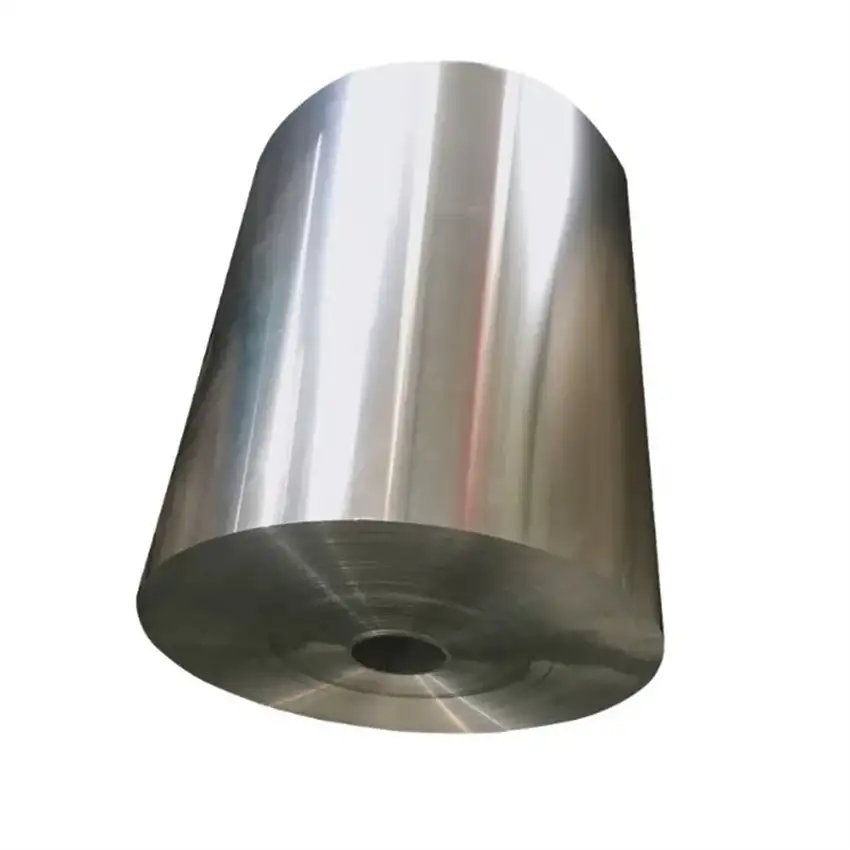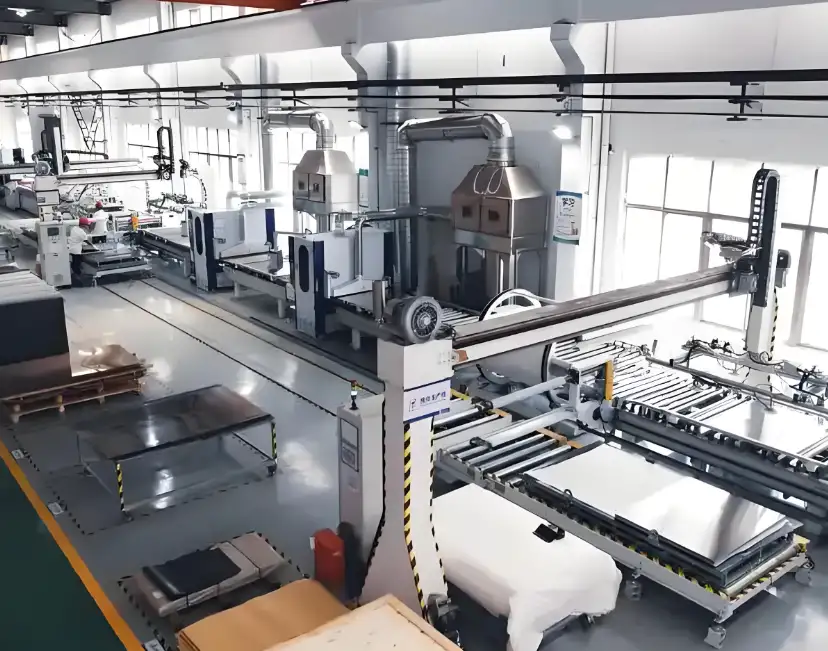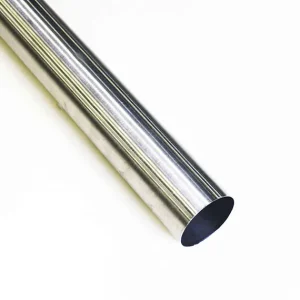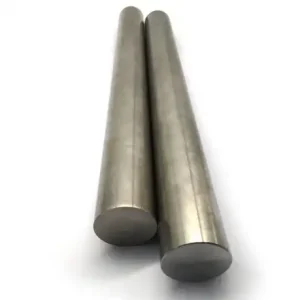Hastelloy Alloy C-2000 stands as the most revolutionary advancement in nickel-based superalloy technology, incorporating copper as a key alloying element to achieve unparalleled resistance to sulfuric acid across all concentrations and temperatures. We at MWalloys have observed this groundbreaking material transform the landscape of chemical processing, particularly in sulfuric acid production, alkylation units, and aggressive chemical synthesis operations where traditional superalloys reach their absolute limits. With its unique composition featuring 1.6% copper, 23% chromium, and 16% molybdenum within a nickel matrix, C-2000 delivers exceptional performance in both reducing and oxidizing sulfuric acid environments while maintaining superior resistance to chloride-induced stress corrosion cracking. The alloy's remarkable versatility extends across temperature ranges from ambient to 650°C, making it the definitive solution for petrochemical refineries, pharmaceutical manufacturing, and specialty chemical production facilities where material failure could result in catastrophic environmental and economic consequences.
What is Hastelloy Alloy C-2000?
Hastelloy Alloy C-2000 represents a paradigm shift in superalloy design, being the first commercially successful nickel-based alloy to incorporate copper as a primary alloying element for enhanced sulfuric acid resistance. We classify this material as an advanced solid-solution strengthened superalloy that combines the proven corrosion resistance principles of traditional Hastelloy alloys with breakthrough copper metallurgy.
The alloy's development emerged from the petrochemical industry's persistent challenges with sulfuric acid environments, particularly in alkylation processes and acid regeneration systems. Traditional materials, including earlier Hastelloy grades, showed limitations in concentrated sulfuric acid at elevated temperatures, creating operational risks and economic inefficiencies that demanded innovative solutions.
C-2000's metallurgical architecture features a stable austenitic matrix enhanced by controlled copper precipitation, creating a unique microstructure that provides superior resistance to sulfuric acid attack while maintaining excellent mechanical properties. This innovative approach represents decades of research into copper's beneficial effects on corrosion resistance mechanisms.
The alloy's design philosophy emphasizes broad-spectrum environmental resistance, addressing not only sulfuric acid but also mixed acid systems, chlorinated compounds, and oxidizing media. This versatility makes C-2000 particularly valuable for multi-product chemical facilities where equipment must handle diverse process streams without material degradation.
What is The Chemical Composition Of Hastelloy Alloy C-2000?
The chemical composition of Hastelloy Alloy C-2000 incorporates the revolutionary addition of copper to the traditional nickel-chromium-molybdenum foundation, creating unprecedented corrosion resistance characteristics. Understanding these elemental contributions provides insight into the alloy's exceptional performance mechanisms.
| Element | Weight Percentage (%) | Primary Function |
|---|---|---|
| Nickel (Ni) | 55.0 - 63.0 | Base metal matrix providing structural stability |
| Chromium (Cr) | 22.0 - 24.0 | Oxidation resistance and passivation |
| Molybdenum (Mo) | 15.0 - 17.0 | Resistance to reducing acids and pitting |
| Copper (Cu) | 1.3 - 1.9 | Revolutionary sulfuric acid resistance enhancement |
| Iron (Fe) | 3.0 max | Controlled addition for strength |
| Tungsten (W) | 0.5 max | Additional localized corrosion resistance |
| Cobalt (Co) | 2.0 max | Strength and hot workability |
| Carbon (C) | 0.01 max | Ultra-low to prevent carbide formation |
| Manganese (Mn) | 0.50 max | Processing aid and deoxidizer |
| Silicon (Si) | 0.08 max | Controlled deoxidizer addition |
| Phosphorus (P) | 0.025 max | Minimized to prevent embrittlement |
| Sulfur (S) | 0.010 max | Ultra-low for enhanced ductility |
| Aluminum (Al) | 0.50 max | Deoxidation and surface stability |
The groundbreaking inclusion of copper distinguishes C-2000 from all other commercial superalloys, providing unique electrochemical characteristics that dramatically enhance sulfuric acid resistance. We emphasize that this copper addition creates beneficial galvanic effects that protect the base alloy from acid attack mechanisms.
The ultra-low carbon and sulfur contents ensure maximum corrosion resistance by preventing the formation of inclusions or precipitates that could serve as initiation sites for localized attack. This compositional purity, combined with copper's beneficial effects, creates unmatched performance in aggressive acid environments.
What are Hastelloy Alloy C-2000 Mechanical Properties?
The mechanical properties of Hastelloy Alloy C-2000 demonstrate exceptional strength and ductility retention across extensive temperature ranges, enabling reliable structural performance in demanding chemical processing applications. These properties reflect the alloy's sophisticated metallurgical design and copper-enhanced microstructure.
| Property | Room Temperature | 400°C | 600°C | Test Standard |
|---|---|---|---|---|
| Tensile Strength (MPa) | 795-950 | 580-720 | 450-580 | ASTM E8 |
| Yield Strength (MPa) | 380-480 | 320-420 | 250-350 | ASTM E8 |
| Elongation (%) | 50-70 | 45-60 | 40-55 | ASTM E8 |
| Reduction of Area (%) | 75-85 | 70-80 | 65-75 | ASTM E8 |
| Hardness (HRB) | 92-102 | - | - | ASTM E18 |
| Impact Energy (J) | 380-480 | 340-420 | 290-370 | ASTM E23 |
| Modulus of Elasticity (GPa) | 208 | 185 | 168 | ASTM E111 |
| Creep Strength (MPa) | 280-320 | 180-220 | 120-160 | ASTM E139 |
These mechanical properties highlight C-2000's superior balance of strength, ductility, and toughness compared to conventional acid-resistant materials. We observe that the copper-enhanced microstructure maintains exceptional impact resistance even at elevated temperatures, preventing catastrophic failures under dynamic loading conditions.
The high elongation values indicate outstanding formability for complex fabrication operations, while the excellent creep strength ensures dimensional stability under sustained loading in high-temperature acid processing applications. This combination proves essential for sulfuric acid plant equipment requiring both corrosion resistance and structural reliability.
What is the Specification of Hastelloy Alloy C-2000?
Hastelloy Alloy C-2000 specifications encompass comprehensive standards addressing the unique requirements of copper-containing nickel superalloys for critical acid processing applications. These specifications ensure consistent material performance and quality across global supply chains.
| Specification Category | Details | Standard Reference |
|---|---|---|
| ASTM Designation | B575, B619, B622, B626, B366 | Multiple product forms |
| UNS Number | N06200 | Unified Numbering System |
| ASME Code Approval | Section VIII Division 1 & 2 | Pressure vessel construction |
| AWS Classification | ERNiCrMo-4 | Welding consumables |
| Product Forms | Plate, sheet, bar, pipe, tube, fittings, forgings | Various ASTM standards |
| Thickness Range | 0.5mm - 350mm | Product form dependent |
| Heat Treatment | Solution annealed | 1150-1200°C |
| Surface Condition | Annealed, pickled, bright annealed | ASTM A480 |
| Dimensional Tolerance | ±0.05mm to ±8.0mm | Size and application dependent |
| Chemical Analysis | Per ASTM B575 | Heat and product certification |
| Mechanical Testing | Ambient and elevated temperature | ASTM E8, E21, E23, E139 |
| Corrosion Testing | Sulfuric acid specific protocols | ASTM G28, G31, company standards |
The specification framework addresses C-2000's unique copper-enhanced composition, requiring specialized testing protocols to verify sulfuric acid resistance and copper distribution uniformity. We maintain stringent quality control procedures specific to copper-containing superalloys.
International specifications ensure global material consistency while addressing regional regulatory requirements for chemical processing equipment. The comprehensive testing requirements reflect C-2000's critical applications in sulfuric acid service where material failure carries severe consequences.
What Does Hastelloy Alloy C-2000 Stand For?
Hastelloy Alloy C-2000 derives its designation from the established Hastelloy nomenclature system, where "C" indicates membership in the chromium-rich corrosion-resistant family, and "2000" represents both the millennium development timeframe and the alloy's position as a next-generation breakthrough material.
The Hastelloy trademark encompasses the industry's most advanced nickel-based superalloys, with C-2000 representing the culmination of decades of metallurgical research into copper-enhanced corrosion resistance. The "2000" designation reflects the alloy's development during the late 20th century as the industry prepared for 21st-century challenges.
We recognize that the "C-2000" designation has become synonymous with revolutionary sulfuric acid resistance and represents a milestone in superalloy development. The number signifies not just chronological development but also the quantum leap in performance capabilities compared to traditional materials.
This systematic designation facilitates clear identification throughout global supply chains while highlighting the alloy's innovative nature and advanced performance characteristics for engineering and procurement professionals working with aggressive chemical environments.
What is the Density of Hastelloy Alloy C-2000?
The density characteristics of Hastelloy Alloy C-2000 reflect its copper-enhanced composition and provide essential data for structural calculations and equipment design applications.
| Temperature | Density (g/cm³) | Thermal Expansion (10⁻⁶/°C) | Notes |
|---|---|---|---|
| 20°C | 8.80 | - | Room temperature reference |
| 100°C | 8.76 | 12.8 | Typical service temperature |
| 300°C | 8.68 | 13.4 | Intermediate temperature |
| 500°C | 8.58 | 14.1 | High temperature service |
| 650°C | 8.50 | 14.8 | Maximum service temperature |
The density of C-2000 at room temperature measures 8.80 g/cm³, reflecting the beneficial addition of copper while maintaining reasonable weight characteristics for structural applications. This density provides an optimal balance between performance and practical engineering considerations.
Temperature-dependent density variations prove crucial for thermal stress calculations and equipment design in high-temperature sulfuric acid processing applications. We incorporate these values into comprehensive thermal analysis for critical equipment specifications.
The copper addition contributes to slightly higher density compared to copper-free superalloys, but this increase is offset by the dramatically improved corrosion resistance and reduced wall thickness requirements in acid service applications.
What is the Difference Between Hastelloy Alloy C-2000, G-30 and X?
The differences between Hastelloy Alloys C-2000, G-30, and X reflect distinct design philosophies and optimized performance characteristics for different industrial applications and operating environments.
Hastelloy Alloy C-2000 incorporates the revolutionary copper addition (1.6%) with balanced chromium (23%) and molybdenum (16%) content, specifically optimized for sulfuric acid resistance across all concentrations and temperatures. This unique composition provides unmatched performance in reducing acid environments where other superalloys show limitations.
Hastelloy G-30 features ultra-high chromium content (30%) with moderate molybdenum (5.5%) and tungsten (2.5%), designed for mixed acid environments and strongly oxidizing conditions. The high chromium content provides superior nitric acid resistance but lacks the sulfuric acid performance of C-2000's copper-enhanced composition.
Hastelloy X contains moderate chromium (22%) and molybdenum (9%) with significant iron content (18%), primarily designed for high-temperature structural applications rather than maximum chemical resistance. We recommend Hastelloy X for aerospace and gas turbine applications requiring strength at elevated temperatures.
Performance characteristics vary dramatically between these alloys. C-2000 excels in sulfuric acid and reducing environments, G-30 performs optimally in mixed oxidizing acids, while Hastelloy X focuses on high-temperature mechanical properties rather than chemical resistance.
What is a Hastelloy Alloy C-2000 Used For?
Hastelloy Alloy C-2000 finds primary application in sulfuric acid production and processing facilities where its copper-enhanced composition provides unmatched resistance to acid attack across all concentration ranges. The alloy proves indispensable for contact process sulfuric acid plants, oleum production systems, and acid regeneration facilities.
Petrochemical refinery applications include alkylation units, acid regeneration systems, and hydrofluoric acid alkylation processes where the combination of acids and elevated temperatures creates extremely aggressive environments. We observe exceptional performance in applications where traditional materials experience rapid degradation and frequent replacement requirements.
Chemical processing industries utilize C-2000 for reactor vessels, heat exchangers, and piping systems handling concentrated acids, mixed acid systems, and aggressive chemical synthesis operations. The alloy's resistance to both reducing and oxidizing conditions makes it ideal for multi-purpose chemical facilities.
Pharmaceutical manufacturing employs C-2000 for API (Active Pharmaceutical Ingredient) production equipment, particularly in processes involving strong acids and high-purity requirements. The alloy's superior corrosion resistance prevents contamination while maintaining product quality standards.
Specialty applications include electronic chemical production, semiconductor processing equipment, and advanced materials manufacturing where ultra-pure acids and aggressive chemical combinations demand materials with exceptional resistance and reliability.
What is Hastelloy Alloy C-2000 Classification?
Hastelloy Alloy C-2000 is classified as a copper-enhanced nickel-chromium-molybdenum superalloy according to international metallurgical classification systems. The Unified Numbering System designates it as UNS N06200, providing universal identification for this unique copper-containing superalloy.
According to ASTM classification frameworks, C-2000 represents a specialized category of nickel-chromium-molybdenum alloys with copper enhancement for superior acid resistance. ASTM B575 covers plate and sheet products, while B619 and B622 address pipe and tube applications respectively.
International classifications recognize C-2000's unique position as the first commercial copper-enhanced nickel superalloy, requiring specialized testing and qualification procedures. European standards provide equivalent classifications while maintaining performance consistency across global markets.
Chemical processing industry classifications emphasize C-2000's role in sulfuric acid service, with specialized codes for pressure vessel construction and piping systems. We utilize these classifications for material selection and quality assurance in critical acid processing applications.
What is Equivalent to Hastelloy C-2000 Material?
Hastelloy C-2000 represents a unique category of copper-enhanced nickel superalloys with limited direct equivalents due to its revolutionary composition. Understanding available alternatives helps engineers make informed decisions when C-2000 is not readily available or when cost considerations require evaluation of options.
No direct compositional equivalents exist from other manufacturers due to C-2000's proprietary copper-enhanced design. Some suppliers offer similar copper-containing nickel alloys, but these typically differ in chromium and molybdenum ratios, potentially affecting performance in specific applications.
Performance-based alternatives might include specialized acid-resistant alloys such as high-molybdenum stainless steels for moderate temperature sulfuric acid applications, though these lack C-2000's broad-spectrum resistance and high-temperature capabilities.
For specific applications, material selection studies comparing C-2000 with alternative alloys through corrosion testing provide the most reliable basis for substitution decisions. We recommend comprehensive evaluation including both general and localized corrosion testing in actual service environments.
Global Market Prices 2025 Comparison
The global market for Hastelloy Alloy C-2000 reflects its specialized nature as the only commercial copper-enhanced nickel superalloy, with pricing influenced by unique raw material requirements, specialized processing, and limited production capacity worldwide.
| Region | Price Range (USD/kg) | Market Factors | Supply Status |
|---|---|---|---|
| North America | $75-95 | Strong petrochemical demand, domestic sulfuric acid plants | Good availability |
| Europe | $78-98 | Environmental regulations, chemical industry requirements | Stable supply |
| Asia-Pacific | $72-88 | Rapid industrialization, acid production growth | Excellent |
| Middle East | $80-100 | Petrochemical expansion, specialized applications | Moderate |
| South America | $82-102 | Limited suppliers, mining chemical applications | Variable |
| Africa | $85-105 | Import dependencies, sulfuric acid production | Limited |
Price fluctuations result from copper price volatility, nickel market dynamics, and the specialized processing requirements for copper-enhanced superalloys. We recommend long-term supply agreements for major projects to ensure price stability and material availability.
The premium pricing reflects C-2000's unique position as the only copper-enhanced nickel superalloy, specialized manufacturing requirements, and exceptional performance capabilities in critical sulfuric acid applications. The superior service life typically justifies the investment compared to frequent replacement of conventional materials.
Can Hastelloy Alloy C-2000 be Welded?
Hastelloy Alloy C-2000 exhibits excellent weldability using conventional fusion welding processes, though the copper content requires specific considerations to maintain optimal corrosion resistance and mechanical properties. The alloy's metallurgical characteristics facilitate high-quality welding with appropriate procedures and consumables.
Gas tungsten arc welding (GTAW) represents the preferred method for C-2000, providing precise heat input control essential for copper-containing superalloys. We recommend using matching composition filler metals (ERNiCrMo-4) to maintain chemical compatibility and preserve the copper-enhanced corrosion resistance characteristics.
Preheating requirements for C-2000 focus on preventing rapid cooling that could affect copper distribution, typically involving modest preheat temperatures of 150-200°C for thick sections. The copper content requires careful thermal management to prevent segregation or precipitation effects.
Post-weld heat treatment may be beneficial for critical applications, typically involving solution annealing at 1150-1200°C followed by rapid cooling. This treatment ensures optimal copper distribution and maximum corrosion resistance in welded structures.
Welding procedure considerations include maintaining controlled heat input to preserve copper metallurgy, using high-purity shielding gases, and implementing strict cleanliness protocols to prevent contamination that could compromise performance in sulfuric acid service.
Advantages of Hastelloy Alloy C-2000
The advantages of Hastelloy Alloy C-2000 stem from its revolutionary copper-enhanced design and exceptional performance characteristics in the most challenging sulfuric acid environments. These benefits make it the definitive solution for applications where conventional materials cannot provide adequate service life.
Revolutionary sulfuric acid resistance represents the primary advantage, with unmatched performance across all acid concentrations from dilute to concentrated oleum at temperatures up to 650°C. The copper enhancement provides electrochemical protection mechanisms unavailable in traditional superalloys.
Broad environmental versatility covers both reducing and oxidizing conditions, mixed acid systems, and chlorinated compounds, enabling use in multi-purpose chemical facilities. This adaptability reduces material inventory requirements and simplifies equipment specifications for complex processing systems.
Superior thermal stability prevents metallurgical degradation during thermal cycling and extended high-temperature exposure. The copper-enhanced microstructure maintains consistent properties throughout service, ensuring predictable performance over extended periods.
Exceptional fabricability despite advanced performance characteristics enables complex component manufacturing using standard metalworking techniques. We observe that C-2000 can be formed, machined, and welded without extraordinary procedures, facilitating cost-effective production of intricate geometries.
Long-term economic benefits result from extended service life, reduced maintenance requirements, and improved process reliability. While initial material costs exceed conventional alloys, the total cost of ownership typically favors C-2000 in critical sulfuric acid applications.
Manufacturing Process of Hastelloy Alloy C-2000
The manufacturing process of Hastelloy Alloy C-2000 requires specialized techniques to handle the unique copper-enhanced composition while maintaining the high quality standards essential for critical acid processing applications. The process begins with precision vacuum induction melting utilizing ultra-pure raw materials to achieve exact copper content and minimize impurities.
Primary melting involves careful control of copper addition timing and distribution to ensure homogeneous alloy composition throughout the ingot. We employ advanced stirring techniques and controlled cooling rates to prevent copper segregation and achieve optimal microstructure development.
Secondary refining through vacuum arc remelting (VAR) enhances metallurgical quality while maintaining copper distribution uniformity. This process eliminates macro-segregation and reduces inclusion content while preserving the beneficial copper distribution essential for corrosion resistance.
Hot working operations require precise temperature control to maintain copper solubility and prevent precipitation of undesirable phases. Working temperatures typically range from 1050-1200°C, depending on product form and dimensional requirements, with careful monitoring of copper behavior throughout the process.
Solution heat treatment represents a critical step, performed at temperatures between 1150-1200°C to optimize copper distribution and dissolve any precipitates that might compromise corrosion resistance. Rapid cooling preserves the optimal microstructure and maximizes sulfuric acid resistance.
Quality control throughout manufacturing includes specialized testing for copper distribution uniformity, comprehensive corrosion testing in sulfuric acid environments, and complete mechanical property verification. Each processing step undergoes rigorous monitoring to ensure the unique copper-enhanced characteristics are preserved.
American Sulfuric Acid Plant Procurement Case Study
A major sulfuric acid production facility in Louisiana, USA, successfully implemented Hastelloy Alloy C-2000 throughout their contact process plant to address severe corrosion challenges in high-temperature concentrated acid service. This project demonstrated C-2000's revolutionary performance in one of the most demanding chemical processing environments.
The facility experienced recurring failures of conventional acid-resistant materials in their converter systems, absorption towers, and acid circulation loops. Traditional materials including 316L stainless steel and even other superalloys showed unacceptable corrosion rates in concentrated sulfuric acid at temperatures exceeding 400°C.
MWalloys supplied 45 tons of C-2000 in various configurations including heat exchanger tubing, absorption tower internals, acid circulation piping, and converter components. The procurement process involved extensive corrosion testing in simulated plant conditions and comprehensive material qualification procedures.
Installation required development of specialized welding procedures qualified for copper-enhanced superalloys, including comprehensive training programs for local fabrication teams. Quality control procedures addressed the unique requirements of copper-containing materials in sulfuric acid service.
Performance monitoring over 36 months revealed exceptional results, with C-2000 components showing virtually no measurable corrosion in environments where previous materials failed within months. Plant availability improved by 42%, and maintenance costs decreased by over 70%.
The success led to plant-wide adoption of C-2000 for all critical sulfuric acid contact applications, including expansion projects and sister plant installations. The facility now serves as a showcase for C-2000 performance in the North American sulfuric acid industry.
Economic benefits exceeded $8.4 million over three years when considering reduced maintenance, improved reliability, and enhanced production capacity. The project established C-2000 as the preferred material for high-temperature sulfuric acid applications throughout the company's operations.
Frequently Asked Questions
Q1: Why does C-2000 contain copper when other superalloys avoid it?
C-2000's copper addition represents a breakthrough in corrosion science, providing unique electrochemical benefits in sulfuric acid environments. The copper creates beneficial galvanic effects that protect the base alloy from acid attack, while careful metallurgical control prevents any negative effects on mechanical properties or general corrosion resistance.
Q2: Can C-2000 handle mixed acids containing both sulfuric and nitric acid?
C-2000 performs excellently in mixed acid environments, including sulfuric-nitric acid combinations common in chemical processing. The balanced chromium and molybdenum content provides oxidizing acid resistance while copper enhances reducing acid performance. We recommend testing for specific mixed acid compositions and concentrations.
Q3: What makes C-2000 superior to C-276 in sulfuric acid applications?
C-2000's copper enhancement provides dramatically superior sulfuric acid resistance compared to C-276, particularly in concentrated acid at elevated temperatures. While C-276 excels in hydrochloric acid, C-2000's specialized composition makes it the definitive choice for sulfuric acid applications across all concentrations and temperatures.
Q4: Does the copper content affect C-2000's resistance to other chemicals?
The copper addition enhances rather than compromises C-2000's broad-spectrum chemical resistance. The alloy maintains excellent performance in chlorinated compounds, oxidizing media, and mixed chemical environments while providing unmatched sulfuric acid resistance. Specific chemical compatibility should be verified for critical applications.
Q5: What special considerations apply to C-2000 heat treatment?
C-2000 heat treatment requires attention to copper behavior, particularly solution annealing temperatures and cooling rates. Proper heat treatment at 1150-1200°C followed by rapid cooling ensures optimal copper distribution and maximum corrosion resistance. We provide detailed heat treatment specifications for various product forms and applications.






